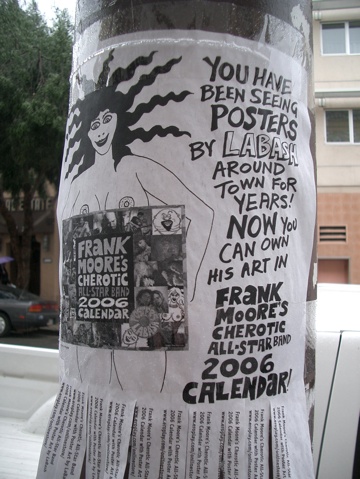Today’s haphazard, desultory and absorbing bit of ephemera arrives by way of Thursday’s New York Times: “Hokum That Stands the Test of Time.” It’s a review of an exhibition of handbills in Los Angeles. No, not just handbills; handbills of a particular sort — those advertising circuses, magic acts, extreme acrobatics, and freak shows of all sorts:
“… single sheets, usually printed on a letter press with lots of hyperbolic language, not much color and only sometimes a crude illustration, rarely fine ones. They trumpet horses that jump through hoops, armless dulcimer players, German strongwomen who lift anvils with their hair, contortionists, fire eaters, magicians and pig-faced ladies.”
You can just picture those German strongwomen.
The show, “Extraordinary Exhibitions,” features items from a collection assembled by Ricky Jay, the actor, magician, student of magic, and Renaissance man. Jay’s collection includes much that is extraordinary. But the focus is on the more mundane, the throwaway announcements urging the rubes to hie themselves to the theatre or the tent at the edge of town to see something they would scarcely believe and never forget. Vast piles of such handbills were trampled into the mud, carted off to the dump in the household garbage, or used to light fires. Times critic Michael Kimmelman says:
“But the handbills must have been appreciated, or else they landed by mistake in a pile on someone’s desk or inside someone’s library, as bookmarks, avoiding leaky roofs, small children with soiled hands and generations of tidy owners, to transmute into prized artifacts that passed to the antiquarian market, from which Mr. Jay, a century or two or three after they were printed, acquired them.
“And now they’ve landed in an art museum.
“Art works that way. It can turn up, unexpectedly, and once you see it, you can’t imagine how you missed it in the first place.”
Of course, there’s more to the handbills than age and rarity. Yes, they promise amazing feats with colorful language and imagery, and they were meant to inspire curiosity if not wonder. But the amazing feat they accomplish now — without anvils or German strongwomen — is they way they capture ordinary voices speaking unselfconsciously to their own time.
Walk around most of our cities today, and you’ll see lots of flyers stapled to utility poles. Some poles in Berkeley have had so many handbills hung on them that they have layers of staples at eye level. The handbill of our day might be more pedestrian — by informal survey, the chief topic is lost pets — and they might lack the artistic flair of handbills of old. But I read them anyway. On some level, there are voices there, and maybe even art.
Technorati Tags: berkeley

